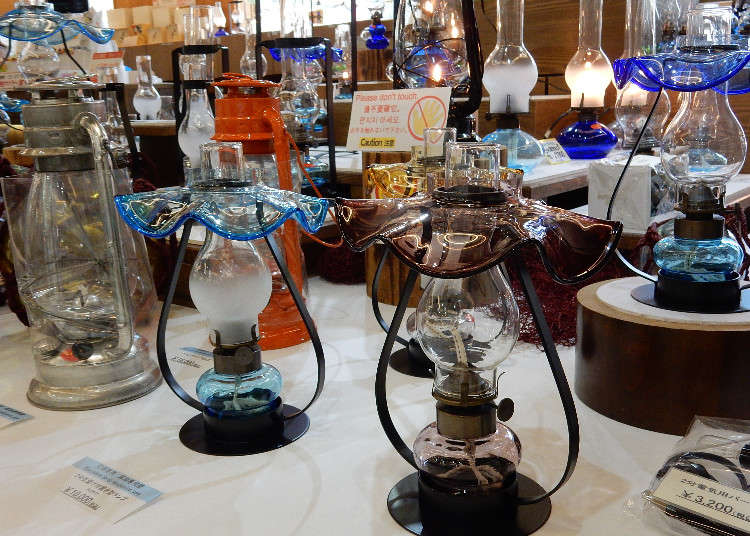
Kitaichi Glass is a long-established Otaru-based company that got its start producing kerosene lamps and glass floats used for fishing nets. There are 18 stores in the city, each with its own style, such as the No. 3 Building and the Venice Art Museum!
Kitaichi Glass Otaru: A long-established store that has supported Otaru
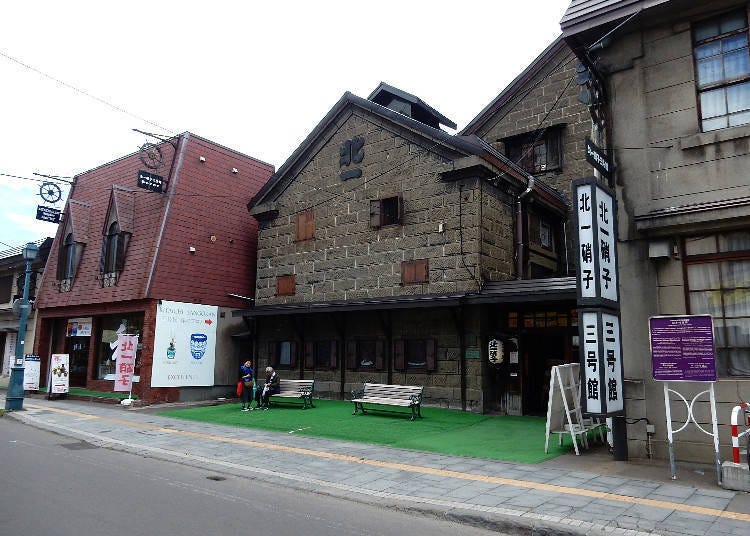
The port town of Otaru is one of Hokkaido's leading tourist cities, with many memorable attractions such as its historical canals and warehouses. This charming town is also noted for its gourmet food, notably popular sweets and fresh seafood.
Glass products are probably the most representative souvenir of Otaru. Otaru prospered during the mid-Meiji era due to its flourishing glass industry that produced glass floats for fishing nets and kerosene lamps.
Kitaichi Glass Otaru is a long-established company that started operations in 1901 producing oil lamps. It has been developing many kinds of original glass products, each with its own distinct features, using technology refined over many years. The 18 shops of Kitaichi Glass in the city are indicative of its immense popularity.
The most popular is the charming Building No. 3
Of all its facilities, the No. 3 Building has the largest number of visitors. The building utilizes one of the stone warehouses, which are designated historical buildings of the city and so rich in atmosphere. Be sure to check out the signboard near the entrance that explains the history of the building in 4 languages including Chinese and Korean!

The Country Floor in the No. 3 Building handles lamps that gave Kitaichi Glass its start. The lamps, which come in various shapes and sizes, are available from 4,000 yen. They use kerosene, but for those who are concerned about fire, there are also those that use light bulbs instead.
Because they are individually handcrafted, each has a slightly different look and feel, so take your time when selecting the one you like. In addition to the lamps, there is also a wide selection of wind chimes, cups and cute figurines.
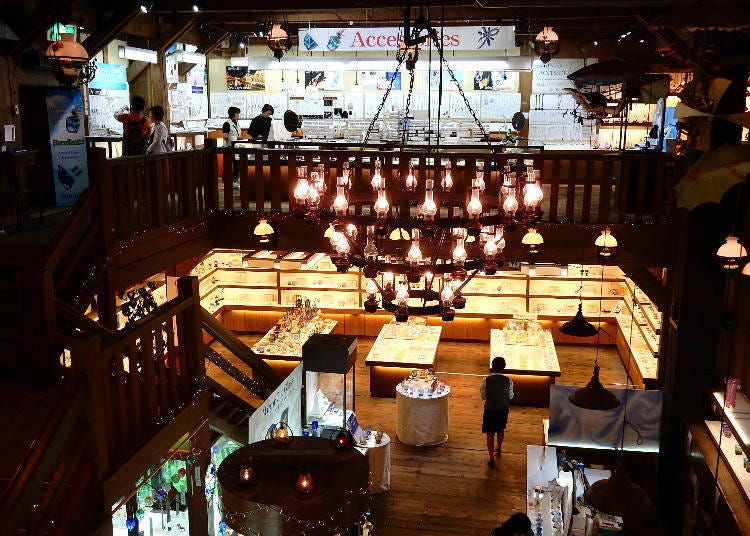
The products of Kitaichi Glass are mainly those for tableware, such as glasses and bowls. Some of the Western-style tableware lined up on the Western Floor also includes artistic products with a surface treatment called shinju kiriko [pearl-cutting].
The glass has a soft radiance and mysterious warmth produced by the delicate cuts made to the surface of the glass by the excellent skill of the craftsmen. One never tires of looking at how beautiful they are when bathed in light. The store also has stained-glass and accessories.
The adjacent Japanese Floor has Japanese tableware made of glass, as well as a variety of products unique to Japan such as ochoko [small sake cup] and tokkuri [sake serving bottle].

One of the popular items, the Tsukimi Usagi [Rabbit Viewing the Moon] series, is a glass that brilliantly reflects the glass craftsmanship of Kitaichi Glass. A circular window is cut on one side using a technique called mirror cut, and through it, one can see the figures of rabbits on the other side.
This is a lovely piece in which it appears that rabbits are floating on a full moon. The bottom of the Tsukimi Usagi Yurayura Glass (4,500 yen) is rounded, so when placed on a table, it gently sways, and there is a wide selection of shapes and colors.
There are many patterns, shapes, and colors to choose from, so you're sure to find something you like. One popular item is a cup that changes color according to the temperature of the drink put in it. Some products also have multilingual explanations.
Kitaichi Hall, bathed in the soothing light of many lamps

The No. 3 Building was used as a warehouse built by a fishery processor in 1896 to store herring and other items. The main feature of the building is the Cafe Kitaichi Hall.
The warehouse surrounded by soft stone walls on all sides is entirely opaque during the day. The dark interior of the store is gently lit by 167 oil lamps handcrafted by Kitaichi Glass craftsmen.
The high ceilings unique to the warehouse are dark but open, creating a calming space, making it the most popular area in the No. 3 Building. The lamps used in the cafe can be purchased on the Country Floor.

The biggest highlight of Kitaichi Hall is the lighting of the lamps just before the store opens. The entrance is opened at 8:45 a.m., 15 minutes before the opening of the store, so it is possible to observe this operation.
The lighting of the lamps one at a time seems like a solemn ritual. The climax is when the final lamps in the chandelier have been lit, after which the chandelier slowly is raised, and the electric work lights have been turned off, signaling the opening of the cafe.
If you are not in a hurry, you are free to film this work. It is a scene unique to this cafe that is worth going a little early to see.
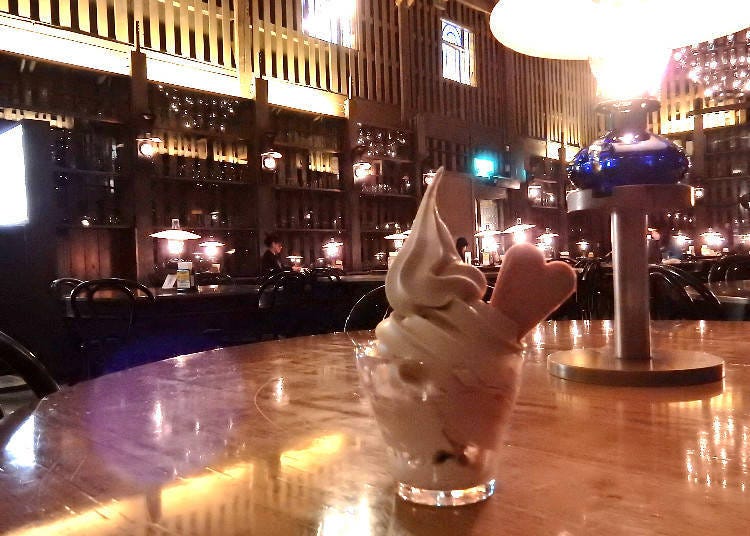
Guests can enjoy drinks and sweets inside the shop. We recommend the Kitaichi Special Milk Tea Soft Ice Cream (450 yen) that is only available in the Kitaichi Hall.
This ice cream is made with carefully selected tea and lots of milk, producing a rich, aroma of tea leaves and has a delicious aftertaste that is most refreshing.
On weekdays, live piano music is performed three times a day, adding a romantic aura to the interior of the store. Between 11:00 a.m. and 3:00 p.m. you can enjoy the assortment of seafood dishes typical of Otaru as well.
-

-
Address
7-26, Sakaimachi, Otaru-shi, Hokkaido, 047-0027
View Map -
Nearest Station
Minami-Otaru Station (Hakodate Main Line)
- Phone Number 0134-33-1993
-
Address
7-26, Sakaimachi, Otaru-shi, Hokkaido, 047-0027
Kitaichi Venetian Art Museum: You will feel like you are visiting a palace in Italy!
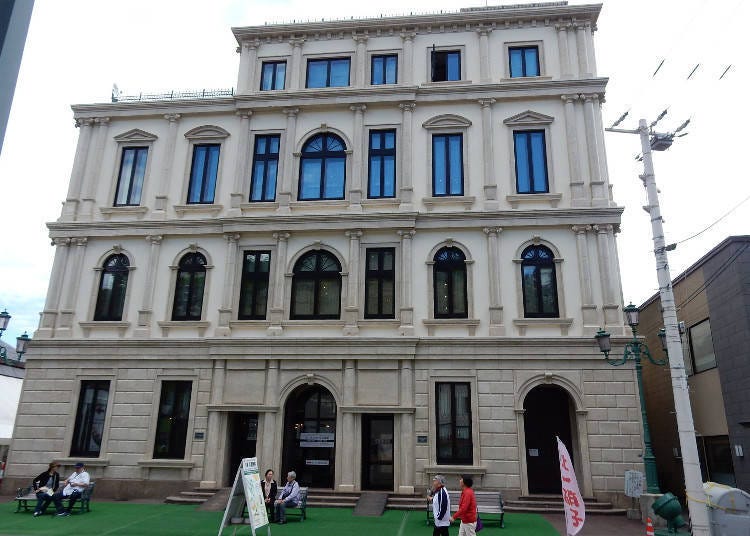
Venice, Italy is the home to authentic glasswork artistry. The Kitaichi Venetian Art Museum, modeled after the Grassi Palace in Venice, is where you can admire authentic glass products made by master craftsmen. The exhibition floors are 2 through 5.
A gorgeous castle-like space with glittering chandeliers hanging from the ceiling, you can see nearly 3,000 works, including glassware and various furniture, up close.

The permanent exhibition conveys the elegant lifestyle of the Venetian nobles. The interiors of the rooms, bathrooms, and dining halls are all made of the finest materials, processed with the best technology, the elegance apparent the moment one sees them.
There are also valuable items that can only be found here, and on the second floor, there is also a gondola that was used for guests of state in which Princess Diana rode.
In addition to various glass products that exhibit the skills of Venetian glass craftsmen who are said to be the best in the world, there are also exhibitions related to glass.

How about having your photo taken dressed in the luxurious costumes of nobles to heighten the feeling of being in this palatial space, an exceptional experience indeed.
The costumes are authentic and made by Italian dressmakers, the colorful ones related to the Carnival that is so representative of Venice. Dress in one that you like and have your photo taken for a memorable souvenir of your visit.
Costume rental costs are 2,000 yen (1500 yen for children) for those made in Italy, 500 yen for Carnival styles (300 yen for children), and you can choose from four different photo sizes (from 500 yen). If you purchase a photo, you can freely take pictures with your camera in a designated room!

The first floor with the entrance to the Kitaichi Venetian Art Museum is the shopping floor. In the middle of the floor are a canal and a gondola reminiscent of the lagoon city Venice.
In the shop, fashionable and high-class products such as glass fountain pens are available. After enjoying the rich ambiance of the museum, why not purchase a wonderful glass product as a souvenir?

On Sakaimachi-dori, the tourist street lined with historical buildings, there are also lots of Kitaichi Glass facilities, such as outlet shops, workshops where you can see the craftsmanship, and cafeterias. While leisurely strolling through the area, stop by the various stores and admire the beauty of the glass products and the technical skills that went into making them.
-

-
Address
5-27, Sakaimachi, Otaru-shi, Hokkaido, 047-0027
View Map -
Nearest Station
Minami-Otaru Station (Hakodate Main Line)
10 minutes on foot
- Phone Number 0134-33-1717
-
Address
5-27, Sakaimachi, Otaru-shi, Hokkaido, 047-0027
Text : minna no kotoba sha
- Area
- Category
*Prices and options mentioned are subject to change.
*Unless stated otherwise, all prices include tax.
Popular Tours & Activitiess
Recommended places for you
-

Niseko Village Ski Resort
Skiing & Snowboarding
Niseko / Rusutsu
-
Appealing

Sapporo Ramen Yokocho
Ramen
Sapporo / Chitose
-

Sapporo Clock Tower
Landmarks
Sapporo / Chitose
-
Appealing

Kanemori Red Brick Warehouse
Shopping Malls
Hakodate
-
Appealing

Asahiyama Zoo
Zoos, Aquariums & Botanical Gardens
Asahikawa
-
Appealing

Rukku and Uohei
Izakaya
Sapporo / Chitose
-

7 Iconic Hokkaido locations that will make your Instagram shine
by: Himanshi Shah
-
Ad

Smart Ways to Avoid Crowds and Enjoy a Safe, Comfortable Trip to Otaru.
-

Beyond Hakodate and Matsumae: Enjoy the Hidden Gems of Hokkaido’s Donan Area
-

Expert-Recommended: 9 Hakodate Hotels Serving Up the Best Breakfasts in Town
by: Nobuka Kawashima
-
Ad

Smart Ways to Avoid Crowds and Enjoy a Safe, Comfortable Trip to Noboribetsu Onsen
-
Ad

Cycling Through Hokkaido: Discover the Beauty of Memuro and the Tokachi Plains
-

Sapporo Outlets: Ultimate Guide to Hokkaido's Mitsui and Chitose Outlet Malls
-

JR Edition: Visit all of Tokyo in one Day with the Tokyo Metropolitan District Pass!
-

Hello Kitty Brings Color to Mitsui Outlet Park Sapporo Kitahiroshima!
-

Top 5 Things to Do in Hokkaido's Biei and Furano Area: Shirogane Blue Pond, Lavender Fields, And More!
-

Top 4 Sightseeing Spots Near New Chitose Airport: From Outlets to Beautiful Gardens
-

Day Trip from Sapporo to Otaru: Access, Itinerary & Food Guide
by: Guest Contributor
- #best sushi hokkaido
- #things to do hokkaido
- #best ramen sapporo
- #what to bring to japan
- #new years in tokyo
- #what to buy in ameyoko
- #japanese nail trends
- #what to do in odaiba
- #onsen tattoo friendly tokyo
- #daiso
- #best sweets otaru
- #japanese fashion culture
- #best nature furano
- #japanese convenience store snacks
- #best japanese soft drinks

















